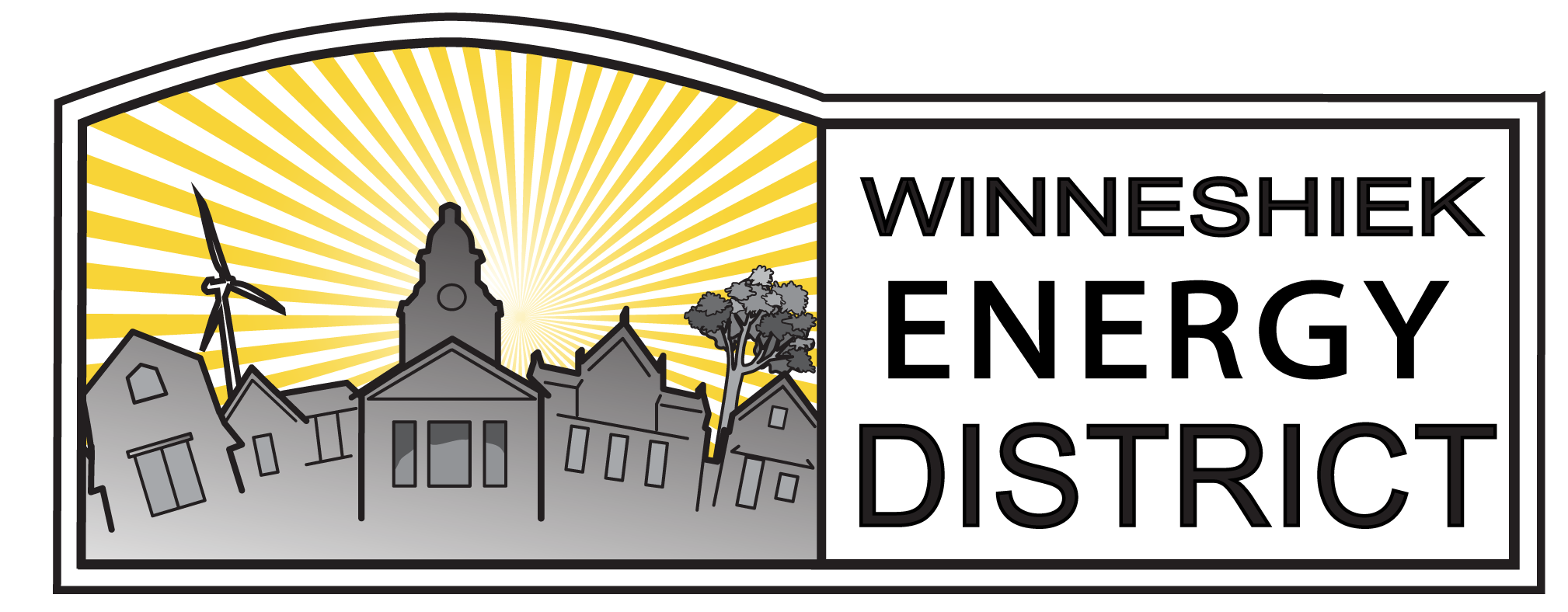Energy District Proposes Shared Solar in Winneshiek County
What’s up with all this talk of “community solar” or a “Winneshiek Shared Solar field”, anyway? We’re glad you asked.
As we explain in our recent article in Iowa County magazine, solar electricity production is not fringe or futuristic anymore. It is here and now, the fastest growing segment of power production in the United States.
Thanks to good economics, scale-ability, and climate concerns, solar also represents the first time in roughly a century that a major portion of new energy production is being installed and owned by the end user. Here in Winneshiek County, we likely have more user-owned solar arrays (see our map!) than any county in Iowa, despite having a fraction of the population of larger counties.
Aren’t all those user-owned, mini solar power plants inefficient, you might be thinking? It is true that utilities can achieve economies of scale for all types of generation, including solar. But the solar return on investment for the home, farm, or business is still very good – better for most in fact, and much safer, than the stock market average. And the local economic impacts of locally-owned solar are very significant, and growing every day.
The thing is, what about the roughly half of all utility customers that simply can’t install solar on their own side of the meter? (Renters, for example, or those with no space, or inadequate rooftop, or shading.) And wouldn’t it be great if we could create some economy of scale in locally-owned solar?
This is the idea behind shared solar (also called “solar gardens” and “community solar”): build a single large array where there is plenty of space and allow everyone to invest, own, or subscribe and to receive credits on their bill, as if their portion or production was on their own roof (or land).
Such a collaborative approach to solar can be administered quite efficiently, and shared solar is the fastest-growing segment of non-utility owned solar nationwide. Because shared solar fields connect to the utility’s grid (rather than on the customer side of the meter), however, the approach requires legislative or regulatory approval, or at least utility agreement.
Many states have enacted programs, and the largest of those is Minnesota’s Solar Garden program. Iowa has not established such a program yet, though the Energy District and others have been actively working with the Iowa Utilities Board to encourage rules supporting shared solar, and we hope the legislature will take up the issue soon. Hawkeye REC does have a small solar garden open for subscriptions (one of the first in the state!), though probably a greater percentage of their customers also have an opportunity on their own site.
Meanwhile, we have seen growing interest in this approach in and around Decorah in recent years, so we figured “let’s ask Alliant”. Rather than ask them to go from zero to sixty overnight, however, we thought a pilot project with a limited number of participants may be more attractive and easy to manage. As many of our public entities have already been considering “going solar” – and they represent pretty much all the rest of us – we figured that might be a good place to start.
And so we drafted a simple proposal to Alliant and began discussions with local entities. This is the process you may have read about in recent months. The proposal is entirely non-binding, simply a collaborative request to Alliant for a shared solar option based on key terms and conditions. If Alliant says “yes”, then further administrative details would need to be worked out, and each entity could determine how to proceed.
The five entities that joined the collaborative proposal requesting a shared renewable option are the City of Decorah, Winneshiek County, Winneshiek Medical Center, Northeast Iowa Community College, and Luther College. If Alliant collaborates, it is possible the initial project could include additional partners (likely other large non-taxable entities). But we also hope that someday soon shared solar will be an option for all Iowans.
Where are we at now? We’re all waiting for a response from Alliant. In deliberations before the Iowa Utilities Board regarding customer-owned solar, they have indicated an interest in collaborating on pilot projects, so we’re hopeful this project will fit the bill. If so, it could be a model for similar projects elsewhere in Iowa, testing the waters for a larger state-wide program.
And of course if Alliant is ready to work together, there is still much work to be done. But what an exciting process this could be, with the benefits accruing to all Winneshiek County residents through sound and thoughtful collaboration of our public entities, Alliant/IPL, and your Energy District.
